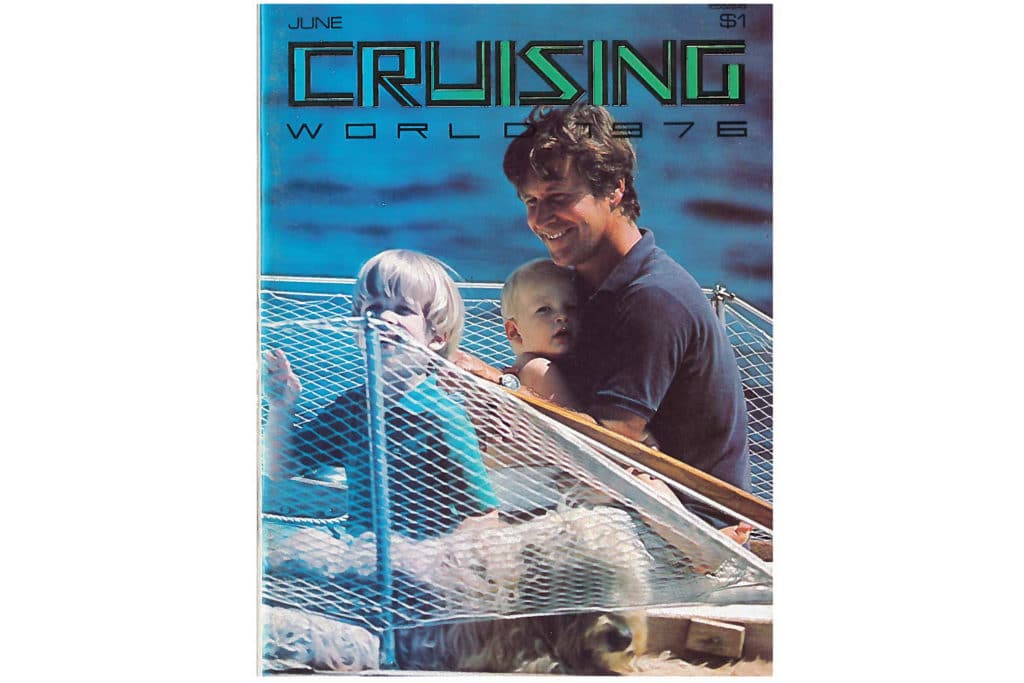This versatile knot can be used as a rugged work knot for joining two heavy ropes and also for ornamental rope work. This is the “sailor’s breastplate” knot used by hard hat divers to tie their air hose lines when not in use. It is shown here joining two lines of different diameters.
Note: These instructions first appeared as part of the article “Basic Knots” in the June 1976 issue of Cruising World. Here is the introduction to the article:
Nautical knot tying is sometimes thought of as a maritime curiosity belonging more to the museum world of the dipper ship than to the cruising world of today’s sailors. Knotting skills all too often begin and end with the mastery of a few basic knots intended to serve on all occasions where a knot is required, but like rope itself, this system eventually breaks down. Choosing the right knot for the job makes for safety as well as convenience.
Few of us have the time or inclination to get into more than a small fraction of the 3,800 knots and knot combinations developed through the ages, but a little time spent on rope work can pay big dividends both in every day cruising and in making those hairy emergency repairs at sea. The difference between success and failure is often a matter of knowing what knot to use and how best to tie it quickly and effectively.
One of the common causes of rope failure is actually the presence of too many knots. Since rope looses strength when knotted (due to the shearing force involved) it is important to choose the right knot for the job and never to let old and random knots remain in a line. Knots, kinks, abrasions, chemical action, weather and ultra-violet radiation all tend to lower the breaking strength of rope.
The smooth surface of synthetics, compared to manila, often requires different or extra knots to prevent slipping. Additional knots will of course reduce overall rope strength, but the ease of handling, pliability and resistance to rot and mildew offered by the synthetics more than make up for these few deficiencies.
It’s part of everyone’s fantasy to encounter an old salt in some remote harbor who might disclose a well kept trick or two about fishing, navigation or boat handling. John Hensel is a far less than ancient mariner who knew more about nautical knotting at the age of 20 than did most of the old salts who hung around remote harbors. He coauthored The Encylopedia of Knots and Fancy Rope Work (Cornell Maritime Press) while still in his 20’s. Now in its fourth edition, the book is considered to be the bible of knotting by professional seamen everywhere.
Having worked as a seaman on everything from tramp freighters to sampans and cruised for pleasure on schooners and diesel yachts, Hensel has acquired a broad expertise at diagnosing knotting problems under any condition and solving them before trouble starts.
Although he now plies the local waters of his home port of Sag Harbor, Long Island, John Hensel regularly finds himself shanghaied by sailing skippers befouled with rigging problems. “It’s amazing just how many otherwise knowledgeable boatmen are stymied by a length of rope,” he observes. “There’s no such thing as an all-purpose knot, although I think the bowline comes closest to it.
“Many people try to make do with overhand and granny knots, which are all right for tying packages for the post office, but when your life and boat may eventually depend on the security of a knot it pays to know what you’re doing. The same goes for splicing. You can get by for years maybe with pre-spliced rope, and pay extra for it, but I wouldn’t want to do any long distance cruising without knowing how to make a serviceable eye or tail splice in stranded or braided rope.”
Click here for more seamanship tips.
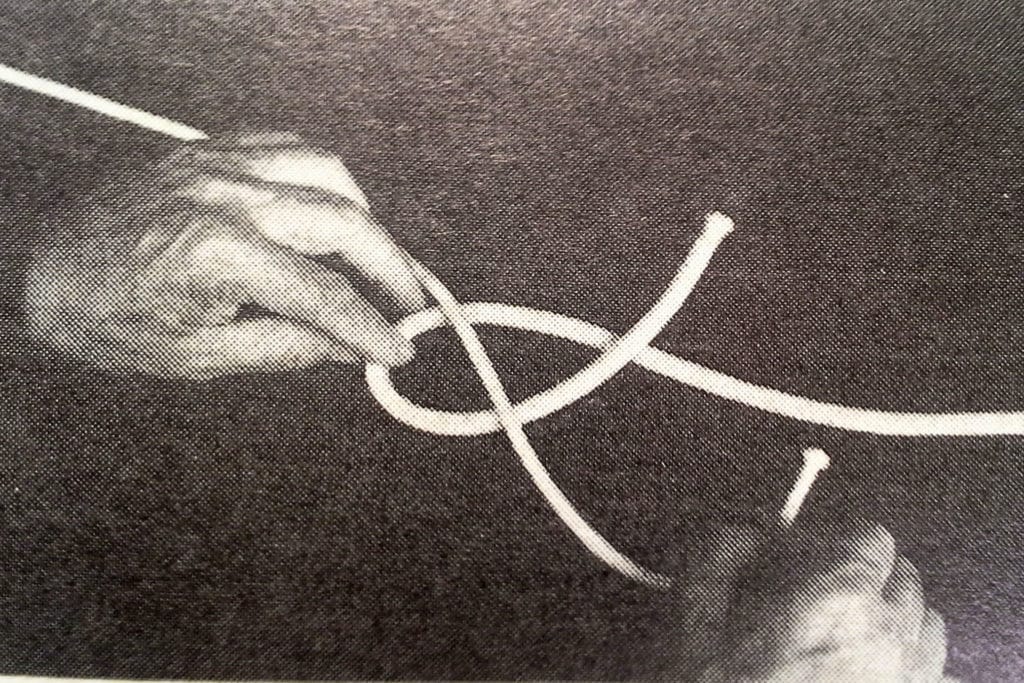
Carrick Bend Step 1
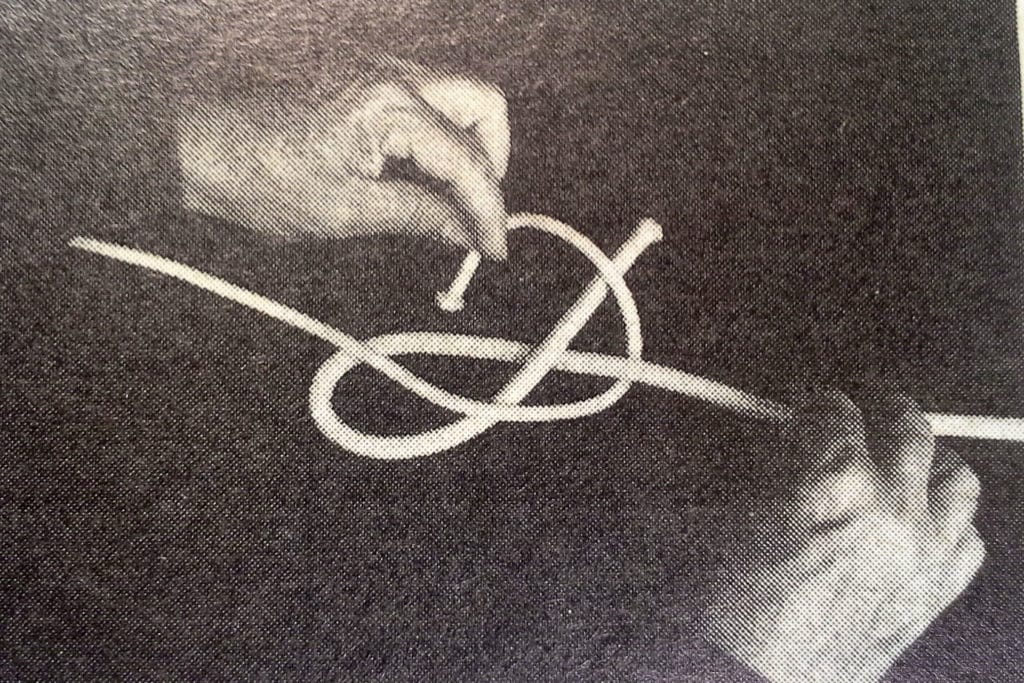
Carrick Bend Step 2
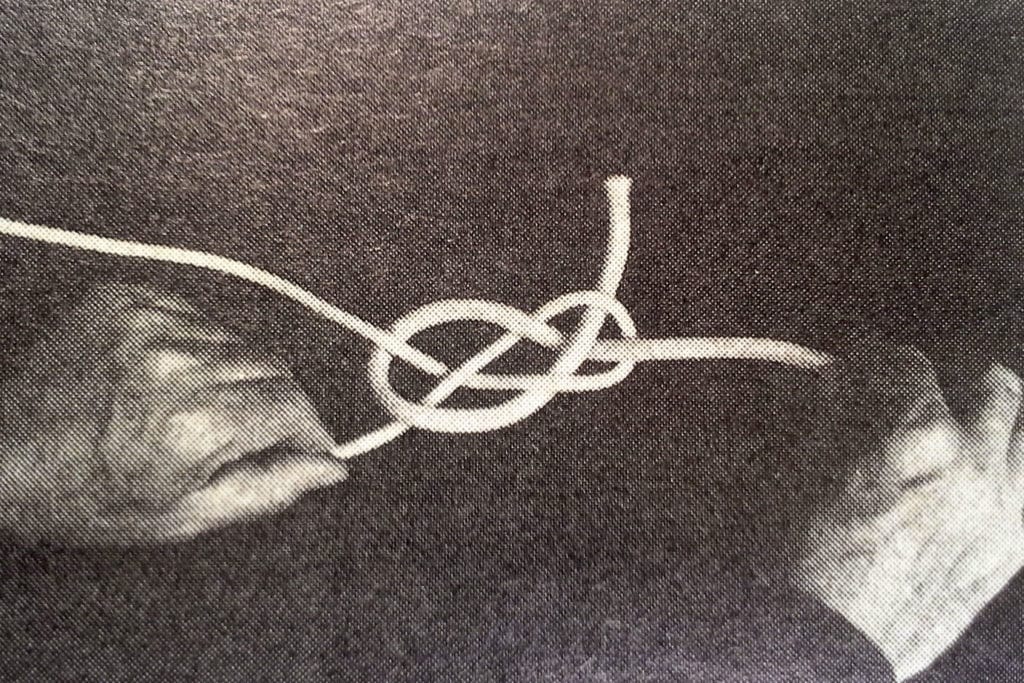
Carrick Bend Step 3
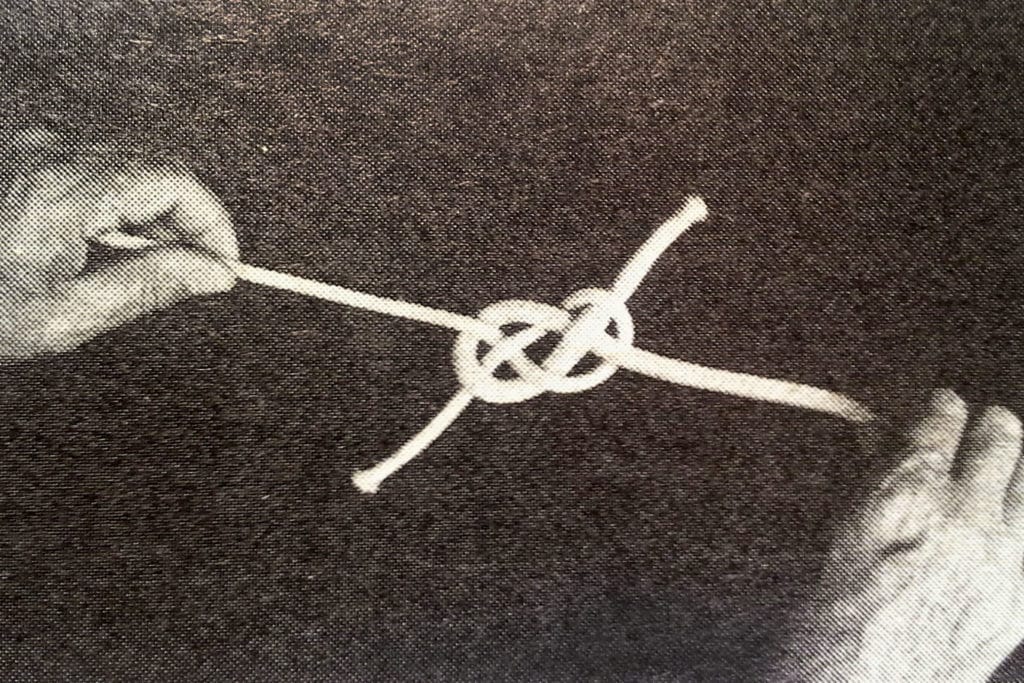
Carrick Bend Step 3
